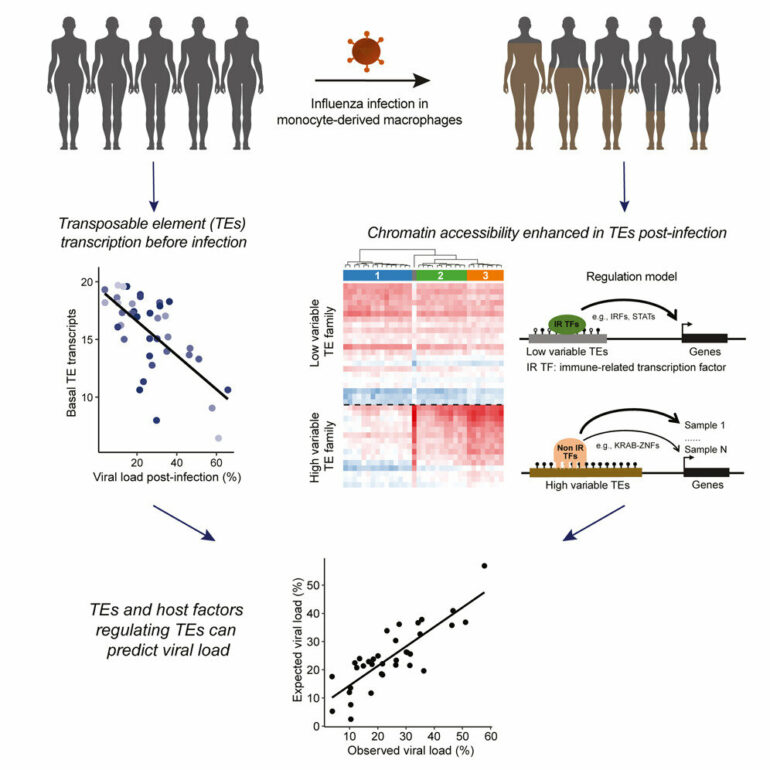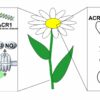Have you ever wondered why some people might get sicker than others, even when they catch the same virus? It is not yet clear why this is. Viral factors (such as differences in the strain of a virus) play a role in this variability, but they cannot account for the wide range of responses in different individuals infected by the same virus. A number of host factors have also been considered, including pre-existing immunity, age, sex, weight, and the microbiome.
Another important factor is the molecular biology within your cells. DNA is shown as one long double-helical strand. So, you might expect that the cell would always read genetic information in order, starting at one end and going to the other. But this isn’t the case. DNA contains transposable elements, sometimes called “junk DNA,” which can change the regions of the genome are being read at a given time.
A new work published in Cell Genomics by an international team led by Dr. Guillaume Bourque studied the role of these transposable elements on the severity of illness after influenza A virus infection.
By examining data from 39 individuals before and after infection with influenza A virus, the researchers were able to identify changes in the accessibility (that is, the “readability”) of transposable elements. To do this, the researchers used an approach combining various sets of multiomics data, which characterize and quantify collections of biomolecules in cells or organisms.
One was the transcriptome, which consists of all copies of RNA transcribed from DNA in the cell. The other was the epigenome, which is the collection of chemical changes to DNA that modify gene expression. An advantage of this multiomics approach is that they were able to identify families of transposable elements with changes in accessibility, which would have likely been missed by previous approaches.
By considering these changes in transposable elements after viral infection, they could identify several transcription factors (proteins that turn specific genes “on” or “off”) that likely contribute to someone’s response to infection. Using these findings, the researchers were able to create a model that could predict an individual’s viral load after influenza A infection.
“A number of questions remain, such as whether the link between transposable elements and viral load is actually causal and whether these changes would be consistent over time,” says lead author Xun Chen. “But these findings are an important step toward understanding the role that such factors play in the variability of illness severity among individuals.”
More information:
Xun Chen et al, Transposable elements are associated with the variable response to influenza infection, Cell Genomics (2023). DOI: 10.1016/j.xgen.2023.100292
Citation:
A multiomics approach provides insights into flu severity (2023, May 12)



